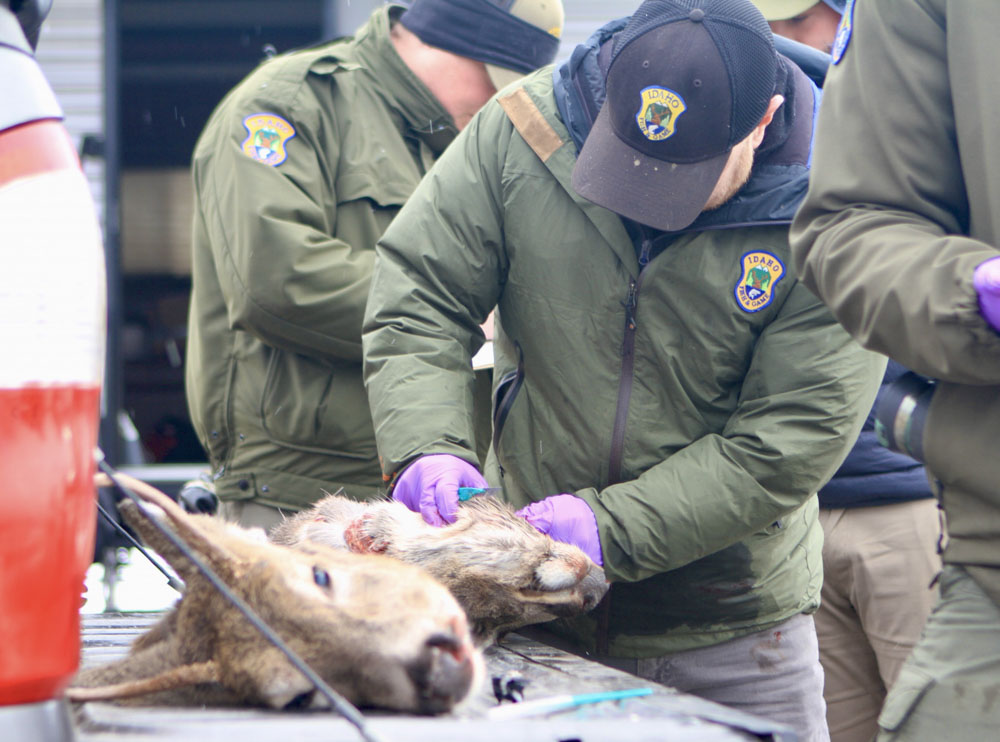Below is a news release from the Idaho Department of Fish and Game.
CWD was detected for the first time in Idaho in 2021 after five total animals including mule deer, white-tailed deer and elk tested positive in hunting Unit 14 between Riggins and Grangeville. Having CWD in Idaho will require hunters to know more about this disease and new rules because of it.
Units 14 and 15 are now designated as a “CWD Management Zone” which means:
All hunters who harvest a deer, elk or moose in a CWD Management Zone are required to have their animals tested for CWD by depositing the head (antlers may be removed) at a designated drop off site. Here’s a map of drop-off site locations.
Carcasses or any part of a deer, elk, or moose harvested in Units 14 or 15 may not be transported out of those units except quarters or deboned meat that does not include brain or spinal tissue, and edible organs that do not include brains. To see other exceptions go to CWD rules webpage.
Note: More hunting units could be added to Idaho’s CWD Management Zone if the disease is detected in other areas.
Fish and Game will continue statewide CWD monitoring
Fish and Game’s efforts will focus on units at, or near, the borders of Utah, Wyoming and Montana, which also have the disease. To see a map of units where samples are needed this year, see CWD monitoring webpage.
Who should have their deer, elk and moose tested
Fish and Game does not recommend that all hunters who harvest a deer, elk or moose in Idaho have it tested for CWD. According to the U.S. Center for Disease Control, there has been no reported cases of CWD infecting people. However, CDC recommends that people do not eat meat from an animal that tests positive for CWD.
Hunters wanting to have their deer, elk or moose tested for CWD need to bring a head or lymph node sample to a Fish and Game Regional office, or a designated sample collection site. Only the lymph nodes or brain stem can be tested for CWD. Meat can not be tested. Test results take about 6 weeks.
Hunters may request a CWD test sampling kit if they want to extract the lymph nodes themselves and have them tested. Fish and Game will provide the kit and testing is free. Allow at least a week for delivery of the sample kit. Hunter can request a test kit and pick it up at a Fish and Game regional office.
CWD management in Idaho
There is no live test, vaccine or cure for CWD, and it is virtually impossible to remove from the environment. Fish and Game’s goal for CWD is early detection, containment and management.
Fish and Game biologists aim to contain the disease in as a small of a geographic area as is feasible and also keep the percentage of animals infected with CWD as low as possible, ideally less than 2 percent. At higher prevalence, it’s more likely to spread.
Some states with CWD in their deer and elk herds have documented long-term population declines and shifts in age structures leading to fewer mature bucks and bulls when the disease was left largely unmanaged.
(Photo credit: Idaho Department of Fish and Game)
